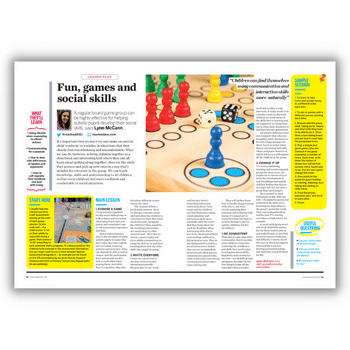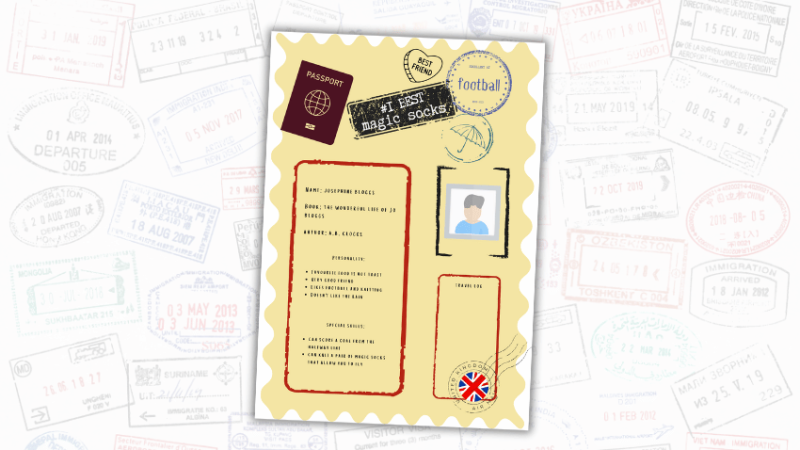Sensory audit – How to optimise your school for autistic children

A few small adjustments to your environment informed by a sensory audit could make all the difference to an autistic child…

- by Alison Eason
- Head of ARP at Barnet Council and Nasen Changemaker of the Year

The primary school classroom as we know it simply doesn’t work for every child.
While their classmates thrive in the busy and stimulating space their teachers create, many autistic pupils struggle with the sunlight streaming in through the window, or the sudden screech when someone pulls a chair away from a desk.
Sensory stimuli that most of us take in our stride can be difficult for some children to process. It’s hard enough simply spending any time in an environment that is overwhelming to the senses, let alone with the expectation of being focused and ready to learn there.
This is why many mainstream schools and specialist autism providers are carrying out sensory audits. These help teachers and practitioners to make the right changes at school, so that autistic children feel more comfortable in their environment.
In our experience, sensory audits provide us with a deeper understanding of the challenges our pupils face. They help us discover how we can help children feel happier and more at home in the classroom.
Here are the key steps I would recommend taking when starting out on a sensory audit for your school.
1. Create a sensory checklist
While we often tend to refer to the five senses, there are in fact seven. These are sight, hearing, smell, taste, touch, balance (vestibular) and body awareness (proprioception).
Processing everyday sensory information in any of these areas can be difficult for autistic people. They may be over-sensitive or under-sensitive to stimuli at different times.
These sensory differences can affect how they feel and act, and can have a profound effect on a person’s life.
To gain an understanding of how sensory differences affect the children in our additionally resourced provision (ARP) we use a sensory checklist from the Autism Education Trust (AET). Schools can access this through the AET’s training programme. You can find another good sensory assessment checklist at NHS Scotland.
Your checklist should evaluate children’s responses to visual and auditory stimuli, tastes, smells and movement. Here are some examples:
- puts hands over eyes or closes eyes in bright light
- dislikes the feel of certain fabrics and substances
- responds negatively to unexpected touch
2. Conduct a sensory assessment
To gain a clear picture of each child’s sensory needs, we talk through each of the behaviour types on the checklist with someone who knows the child well. This could be a colleague, the child’s parent or carer, or even a sibling. We go through the statements together, and tick ‘yes’, ‘no’ or ‘don’t know’ for each.
If the child is at the stage where they are able to self-advocate by communicating their needs, we try to include them in the process, too.
But rather than saying ‘has difficulty catching balls’ we might simplify the sentence. We’ll change it to something like ‘when teacher throws ball, can Amy catch it?’. We might use symbols to help the children communicate their own views and ideas.
Sometimes it is possible to detect patterns of behaviour which indicate a child is particularly sensitive to one or two senses, such as taste and smell. Other children will show sensory differences right across the board.
It doesn’t take too long to assess each child. However, the insight the process gives you is worth its weight in gold.
3. Identify triggers and comfort factors
With the information from the assessment, you can find out which aspects of the classroom may cause discomfort, anxiety or sensory overload for each of the pupils, and which elements could promote a calm learning environment for them.
Walk around the classroom with a parent or another teacher. Observe the environment and the sensory stimuli, then address each of the senses in turn to see which elements can be adapted and how.
If you have access to an occupational therapist, through your local authority or privately, they can support you with target setting and provide strategies to support the child in school and at home.
A sensory audit should give you a classroom which works for all pupils, while catering for neurodivergent children. By implementing these reasonable adjustments, you will create an inclusive classroom and promote self-regulation at its heart.
4. Monitor improvements as part of an ongoing sensory audit
Once you have put the adaptations in place, set an initial trial period to measure the impact of the changest. Observe how autistic pupils respond, and gather feedback from teachers, support staff and parents.
Based on this information, you will see which alterations are working and where additional adjustments are needed.
It’s a good idea to conduct regular reviews and updates of the environment to ensure it is working effectively for the children and to address any changes, such as when a new child joins the class.
5. Get everyone on board with your sensory audit
I am a firm believer in the importance of embedding good sensory practice throughout the school. It is worth exploring training opportunities for teachers, staff and students to learn about the best way to support autistic children with sensory differences.
It’s also important to work with the whole school community to raise awareness about sensory differences, and to keep parents informed about the sensory audit and the strategies you develop as a result of your research.
One of the positive outcomes of a sensory audit is that as well as catering for neurodivergent children’s sensory differences, it can also boost neurotypical children’s understanding of their autistic peers’ needs.
When teachers identify autistic children’s sensory needs, and make adaptations to activities, equipment and environments, they give these pupils the opportunity to flourish. And by promoting good autism practice throughout the school, all pupils learn to understand and celebrate their differences.
How to identify sensory triggers and comfort factors
- Sight: Check fluorescent lights for flickering, and consider installing well-fitting blinds or a dimmer switch. Make sure the room is not cluttered and that resources are clearly labelled with a visual cue (e.g. Widgit symbols).
- Sound: Keep equipment such as TVs and audio systems to a minimum, and switch computers off when they are not being used, as many autistic children can become dysregulated by small, background noises.
- Taste: Make sure all adults are aware of pupils who are sensitive to certain tastes, and make adjustments when organising cooking activities. Give children the opportunity to gradually try lots of different tastes.
- Smell: For children who are sensitive to smells, explore ways to reorganise seating at lunchtime, or create a separate space where a child can eat. Be mindful of smells in the classroom environment, like cleaning products.
- Touch: Check the classroom for materials which might trigger a pupil’s sensitivity to touch, such as dressing-up clothes or playdough, and find alternative activities. Investigate tactile experiences for children with under-sensitivity to touch, e.g. sensory stickers, weighted blankets and fidget toys.
- Balance: Ensure the environment is ordered and tidy, making it easier for a child with balance difficulties to navigate. If possible, include activities that can develop the sense of balance, such as dancing, playing on a rocking horse or swinging.
- Body awareness: Clear enough space for pupils to sit and move around comfortably and encourage activities to develop body awareness, like throwing and catching, and parachute games.
Alison Eason is head of the Additionally Resourced Provision (ARP) at Chalgrove Primary School. Browse resources for Autism Acceptance Week.







